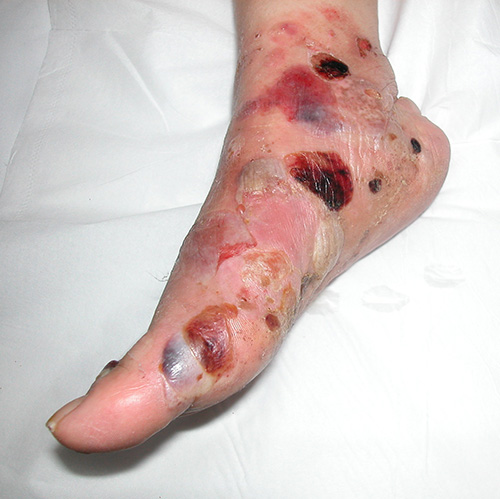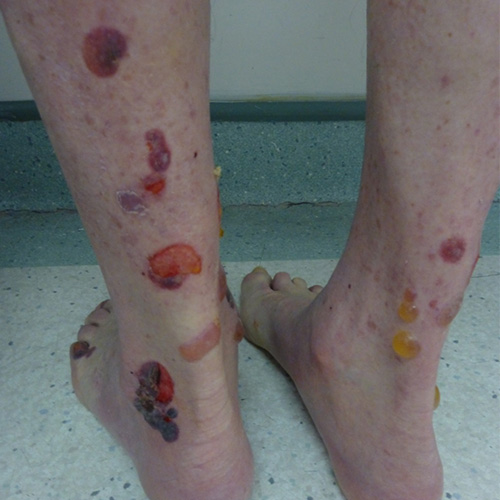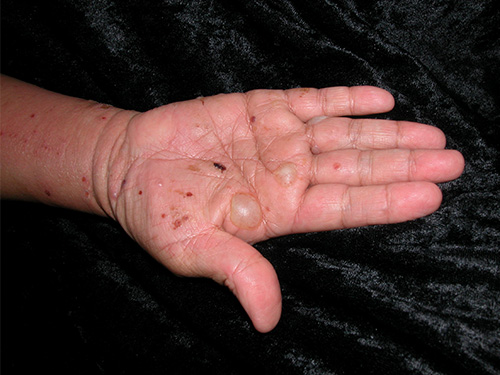Bullous pemphigoid
Bullous pemphigoid is an autoimmune blistering skin condition caused by antibodies against basement membrane antigens. The condition mostly affects older people, and presents as firm blisters on an erythematous base. A prebullous phase with urticarial plaques or resistant dermatitis can occur. The blisters are frequently widespread, but can be localised (usually on the shins but sometimes on the genitals, hands and feet). See here for photos of bullous pemphigoid.



Refer patients with suspected bullous pemphigoid to a dermatologist. Urgency of referral depends on severity and progression of symptoms. Widespread blisters need more urgent referral.
Bacterial infection of bullous pemphigoid is uncommon, but taking a swab on initial presentation is useful to exclude bullous impetigo.
For lesions that are localised to nonflexural areas (eg shins), a topical corticosteroid can be used while waiting for dermatologist review. Use:
betamethasone dipropionate 0.05% cream or ointment topically, once daily until skin is clear. betamethasone dipropionate betamethasone dipropionate betamethasone dipropionate
Large blisters can be aspirated and dressed; the roof of the blister should be kept intact. Wet dressings can be used in combination with the topical corticosteroid.
Patients with blisters are often quite itchy (especially if urticaria plaques are present); an antihistamine may be trialled.
Bullous pemphigoid is often widespread, and requires systemic therapy because topical corticosteroids are insufficient to control the condition. If the condition is widespread or not responding to topical corticosteroids, seek dermatologist advice for oral corticosteroids. Other treatments used by dermatologists include low-dose doxycycline, niacinamide, dapsone, methotrexate, ciclosporin, mycophenolate, intravenous immunoglobulin (IVIG) and rituximab. Choice of systemic treatment depends on patient comorbidities and severity of the condition.
